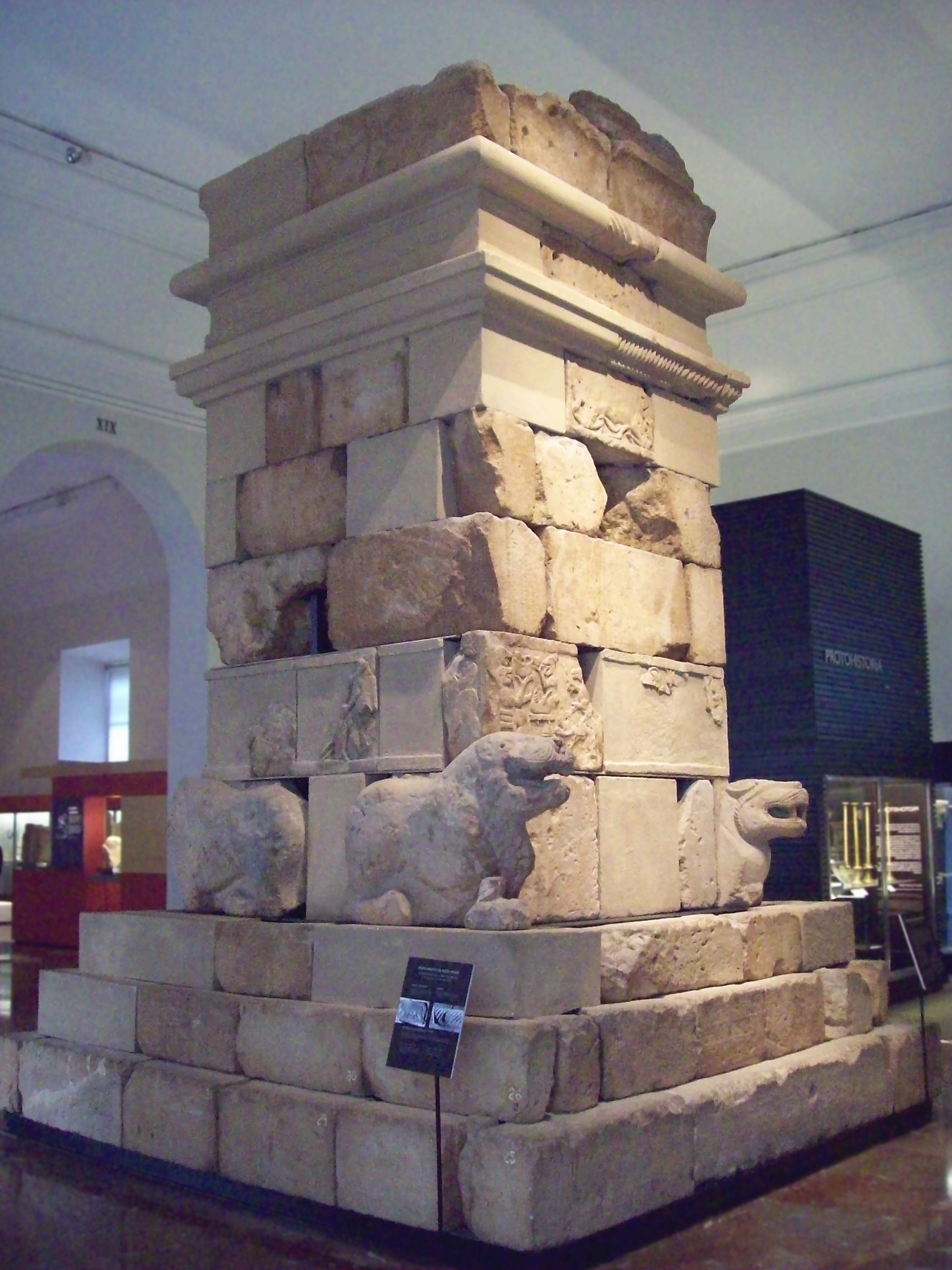Mausoleum of Pozo Moro on:
[Wikipedia]
[Google]
[Amazon]
 The Mausoleum of Pozo Moro is a Mausoleum of the
The Mausoleum of Pozo Moro is a Mausoleum of the
 The Mausoleum of Pozo Moro is a Mausoleum of the
The Mausoleum of Pozo Moro is a Mausoleum of the Iberians
The Iberians ( la, Hibērī, from el, Ἴβηρες, ''Iberes'') were an ancient people settled in the eastern and southern coasts of the Iberian peninsula, at least from the 6th century BC. They are described in Greek and Roman sources (amo ...
from the end of the 6th century BC, which was discovered in 1970 in excavations made in the Province of Albacete
Albacete ( es, Provincia de Albacete, ) is a province of central Spain, in the southern part of the autonomous community of Castile–La Mancha. As of 2012, Albacete had a population of 402,837 people. Its capital city, also called Albacete, is ...
.
Location
Pozo Moro, near theSpanish
Spanish might refer to:
* Items from or related to Spain:
**Spaniards are a nation and ethnic group indigenous to Spain
**Spanish language, spoken in Spain and many Latin American countries
**Spanish cuisine
Other places
* Spanish, Ontario, Can ...
community of Chinchilla de Monte-Aragón
Chinchillas are either of two species (''Chinchilla chinchilla'' and ''Chinchilla lanigera'') of crepuscular rodents of the parvorder Caviomorpha. They are slightly larger and more robust than ground squirrels, and are native to the Andes moun ...
, lies about 840 m above sea level and 125 km from the Mediterranean coast at the intersection of important ancient roads. Here the road from Carthago Nova ( Cartagena) to Complutum ( Alcalá de Henares) and the central Spanish plateau
In geology and physical geography, a plateau (; ; ), also called a high plain or a tableland, is an area of a highland consisting of flat terrain that is raised sharply above the surrounding area on at least one side. Often one or more sides ...
met the ''Via Heraclea'' (also known as the Via Augusta
The ''Via Augusta'' (also known as the ''Via Herculea'' or ''Via Exterior'') was the longest and busiest of the major roads built by the Romans in ancient Hispania (the Iberian Peninsula). According to historian Pierre Sillières, who has super ...
), which ran down the Guadalquivir
The Guadalquivir (, also , , ) is the fifth-longest river in the Iberian Peninsula and the second-longest river with its entire length in Spain. The Guadalquivir is the only major navigable river in Spain. Currently it is navigable from the Gul ...
to Gades (Cádiz
Cádiz (, , ) is a city and port in southwestern Spain. It is the capital of the Province of Cádiz, one of eight that make up the autonomous community of Andalusia.
Cádiz, one of the oldest continuously inhabited cities in Western Europe, ...
) and along the Spanish Levante.
Description
The Mausoleum was found in pieces in an Iberian necropolis, strewn over a 12 x 12 m area and his since been reconstructed in theMuseo Arqueológico Nacional de España
The National Archaeological Museum ( es, Museo Arqueológico Nacional; MAN) is a museum in Madrid, Spain. It is located on Calle de Serrano beside the Plaza de Colón, sharing its building with the National Library of Spain.
History
The museu ...
in Madrid
Madrid ( , ) is the capital and most populous city of Spain. The city has almost 3.4 million inhabitants and a Madrid metropolitan area, metropolitan area population of approximately 6.7 million. It is the Largest cities of the Europ ...
. The Mausoleum, which was erected by an Iberian king around 500 BC, is the oldest known Iberian grave monument. The find spots of the rectangular blocks enabled an accurate reconstruction of the structure, which must have been about 10 metres high and have stood atop a three-level square pedestal 3.65 m wide. Four stone lions stood on the corners of the mausoleum, whose walls were decorated with relief
Relief is a sculptural method in which the sculpted pieces are bonded to a solid background of the same material. The term '' relief'' is from the Latin verb ''relevo'', to raise. To create a sculpture in relief is to give the impression that th ...
s depicting deities. These sculptures belong to the orientalising phase of Iberian art
Iberian refers to Iberia. Most commonly Iberian refers to:
*Someone or something originating in the Iberian Peninsula, namely from Spain, Portugal, Gibraltar and Andorra.
The term ''Iberian'' is also used to refer to anything pertaining to the fo ...
and are heavily influenced by Hittite and Syrian art.Martín Almagro-Gorbea, p. 149.
References
Bibliography
* Martín Almagro-Gorbea: ''Pozo Moro''. In: Michael Koch (Ed.): ''Die Iberer'' (Exhibition Catalogue). Hirmer, München 1998, , pp. 148−149. {{Commonscat, Monument of Pozo Moro Buildings and structures completed in the 6th century BC Mausoleums in Spain Iron Age Spain Buildings and structures in Castilla–La Mancha Collection of the National Archaeological Museum, Madrid Iberians Archaeological discoveries in Spain